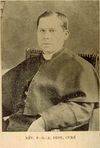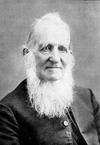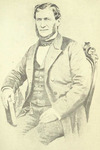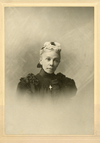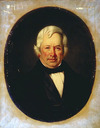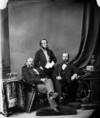College as he had promised in his letter to Godinot. Thinking that the Jesuits would not come, he had entrusted that institution to his secular clergy. Chazelle considered returning to New Orleans, but in
problems of administration and property ownership. In the course of the ensuing decades the congregation almost disintegrated. During this time it was served by laymen, and occasionally by the clergy of the
in his eulogy described Father Dion as “one of the most distinguished and zealous members” of the clergy in the diocese.
Dion’s life was quite short
Church, Lennoxville . . . , [ed. Henry Roe] (Sherbrooke, Que., 1904). G. J. Mountain, A charge delivered to the clergy of the diocese of Quebec at the triennial
, the clergy, and the general population, and even despite a fervent plea from the provincial visitor, Brother Réticius [Louis Gonnet*], Brother
Monbeton* de Brouillan, Durand had been instructed to improve the clergy’s relations with the civil authorities. He seems to have been successful. Brouillan’s death in September 1705 undoubtedly
in 1835. Never was an editor’s position more difficult. Agitation over the clergy reserves was at its height, and the Methodist conference was claiming its right to an equal share even while it was
. Historicus, “Pioneer clergy of the diocese of Huron, ii,” Huron Church News (London), 1 Jan. 1952: 6 [contains a portrait of
questions of public interest. He was a prolific writer and a forceful speaker. With vigour and clarity he entered into public discussions on clergy reserves, endowed rectories, the desectarianism of King’s
never itself produce but would not protect it from Britain. He also stood for the clergy reserves and against full-blown separate schools. Nevertheless, he deplored, at this period, those Tories who
anticlerical movement in France had succeeded in 1889 in having priests, members of religious orders, and seminarists made liable for military service, and the clergy faced the possibility of greater persecution
place in the presence of Bishop Laval* and the clergy. The Giffard name died out in Canada with his son Joseph, who left no issue. Besides his
strain on the unity of the lodges and on his relations with the Tories by introducing on 8 April 1839 in the House of Assembly a bill for dividing clergy reserves among all legally recognized
always a problem – on one occasion he walked upwards of 30 miles to preach at an isolated settlement – and contact with his fellow clergy was rare, something he had hoped would change with the
Strachan School in Toronto. Founded in 1867 by a group of clergy and lay people led by the Reverend John Langtry, the school was one of the first ventures by the Church of England in Canada into the
election of churchwardens and the rendering of accounts by the fabriques. The assembly consulted numerous parish priests and, with one or two exceptions, the clergy as a whole was opposed to the
, that the laity, not the clergy, should control the board. When Morris resigned late in 1842, Hamilton, characterized by a Queen’s historian as a “competent” layman, became chairman and remained so until
-Norbert Morin*, Hartman crossed over to the opposition when their government failed to introduce legislation secularizing the clergy
” and was opposed by those who felt that direct taxation was unnecessary and by the clergy, particularly Roman Catholics. The opponents of the bill carried the fight to the New Brunswick Supreme Court and
.
Herron had an interest in church affairs in Nova Scotia and Lower Canada not uncommon among the Newfoundland clergy under Lambert and Scallan, and indicative of the closer ecclesiastical relationship which


